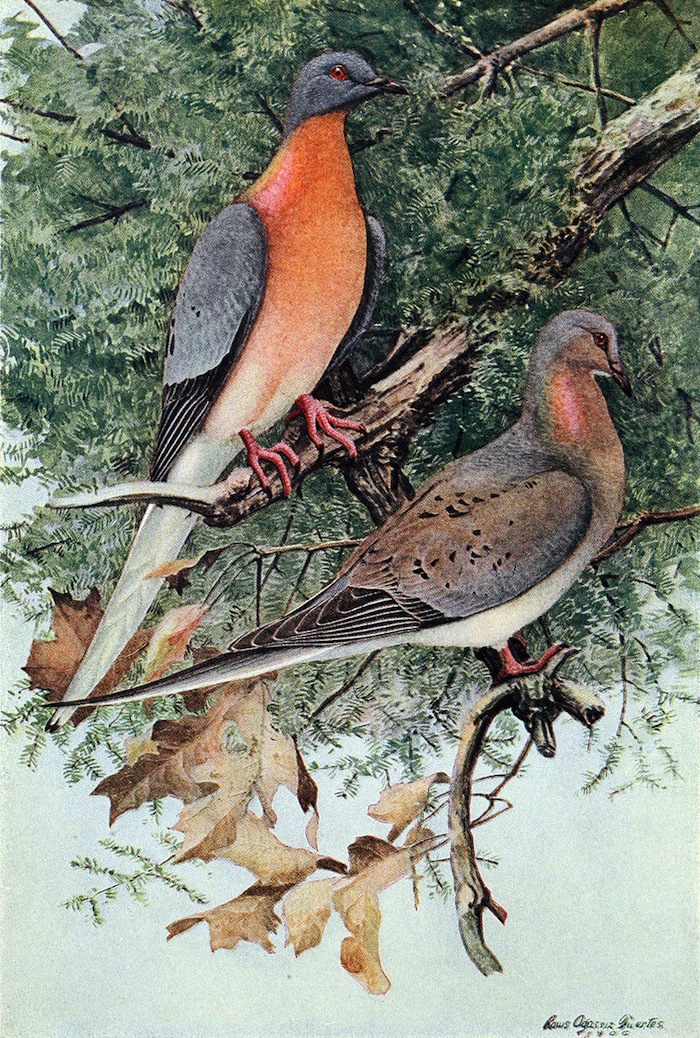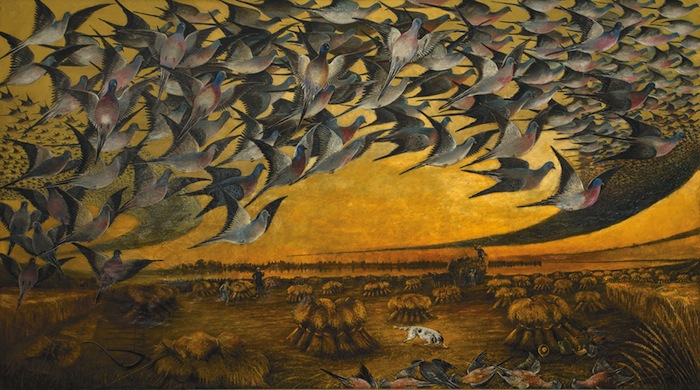
Passenger Pigeon (image from Wikipedia Commons)
The Passenger Pigeon (Ectopistes migratorius) was once the most abundant bird in North America, and possibly the world. These seemingly numberless flocks were considered an infinite resource and exploited so drastically that the species was driven to extinction in mere decades.
One flock in 1866 in southern Ontario was described as being 1 mile wide and 300 miles long, took 14 hours to pass, and held in excess of 3.5 billion birds.

Lewis Cross: Passenger Pigeons in Flight, painted in 1937
The extinction of the Passenger Pigeon had two major causes: commercial exploitation of pigeon meat on a massive scale and loss of habitat. Large flocks and communal breeding made the species highly vulnerable to hunting. As the flocks dwindled in size, populations decreased below the threshold necessary to propagate the species.
Naturalist Paul R. Ehrlich wrote that its extinction “illustrates a very important principle of conservation biology: it is not always necessary to kill the last pair of a species to force it to extinction.”
The story of the Passenger Pigeon is a poignant reminder of the need for effective conservation. The 100th anniversary of the species’ disappearance reminds legislators and people everywhere of the importance of protecting endangered wildlife before it’s too late.
Protecting endangered wildlife is part of Audubon’s Mission: “To conserve and restore natural ecosystems, focusing on birds, other wildlife, and their habitats for the benefit of humanity and the earth’s biological diversity.”

Comments are closed.